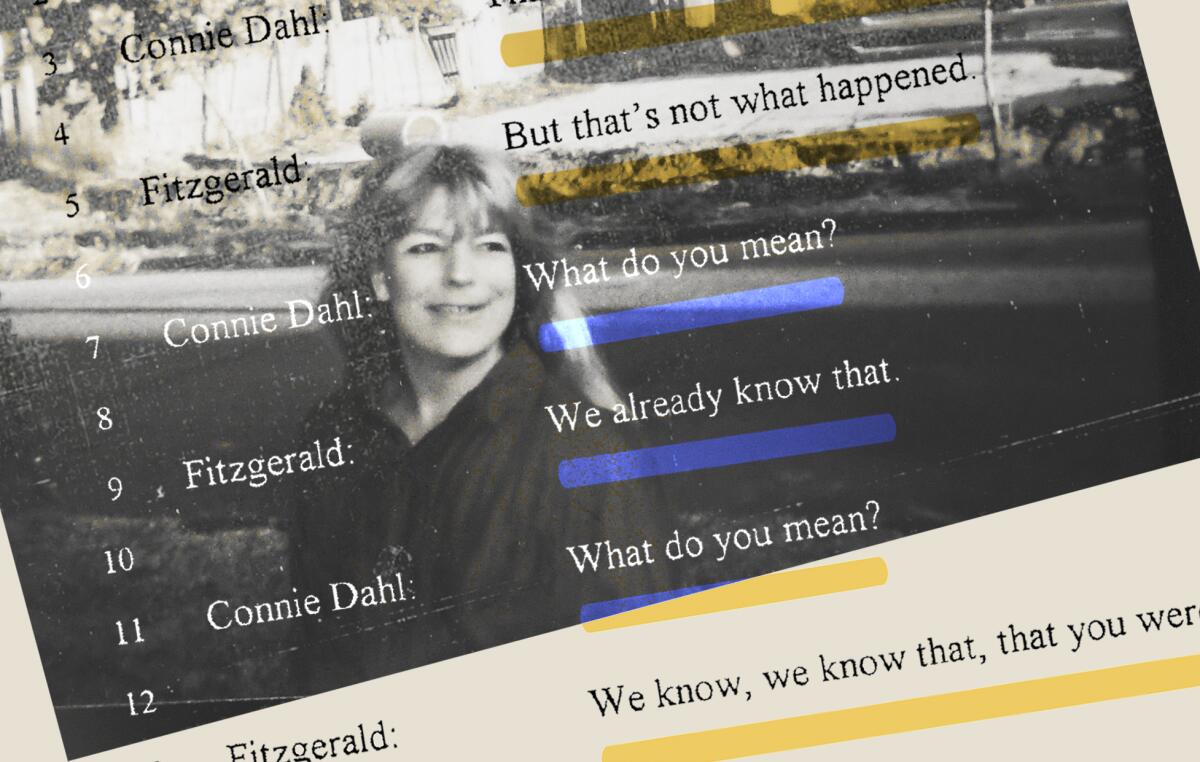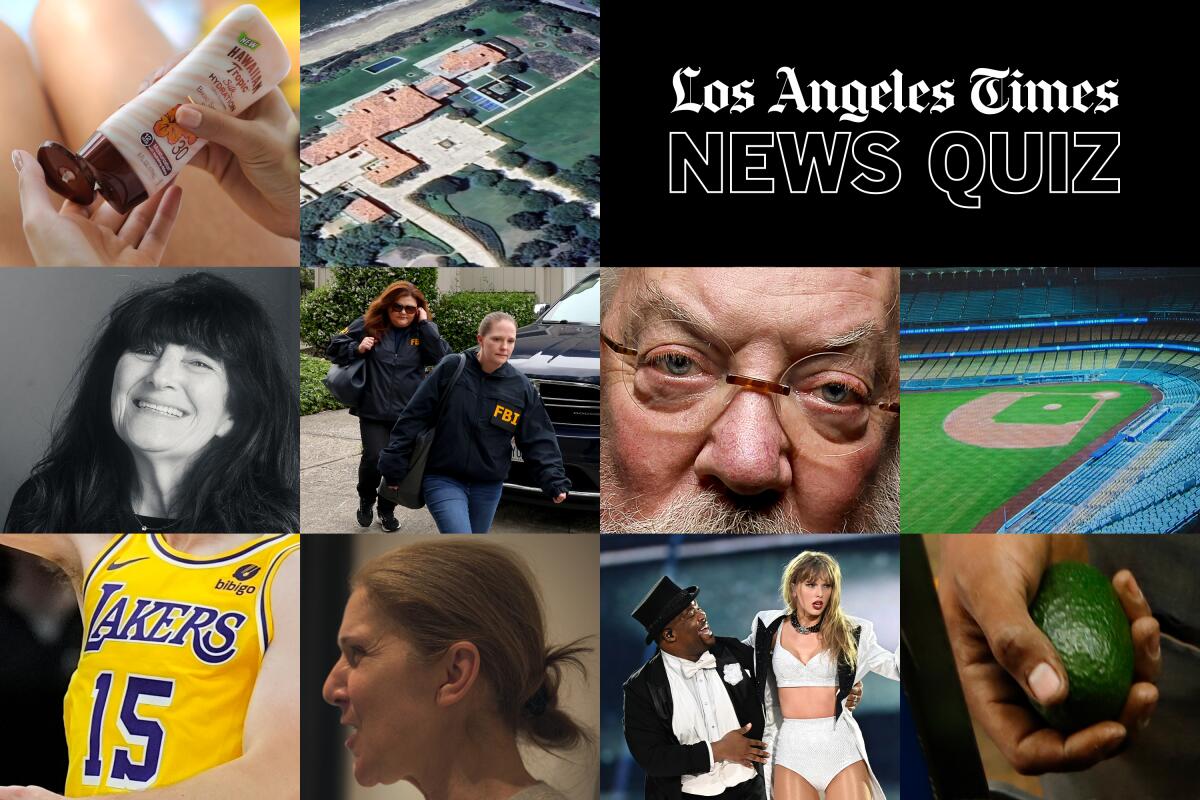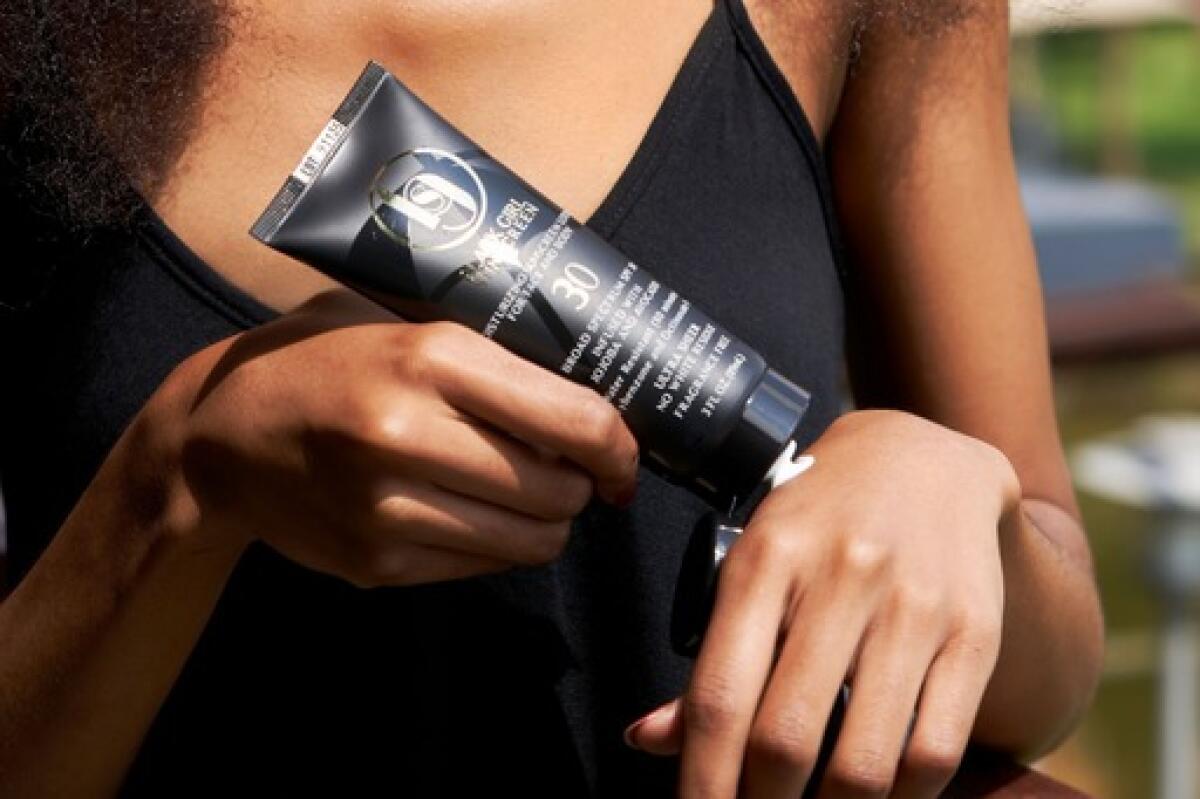
Good morning, and welcome to the Essential California newsletter. It’s Saturday, June 29. Here’s what you need to know to start your weekend:
You’re reading the Essential California newsletter
Our reporters guide you through the most important news, features and recommendations of the day.
You may occasionally receive promotional content from the Los Angeles Times.
- Sunscreen myths you can’t afford to fall for
- State Farm seeks major rate hikes for California homeowners and renters
- 50 spots to watch thrilling Fourth of July fireworks and drone shows in L.A.
- And here’s today’s e-newspaper
Don’t fall for these sunscreen myths
As we inch closer to July, summer heat is arriving at a rapid pace. No more cool breezes from our open windows, just constant heat throughout the day.
Warmer weather often leads us to spend more time cooling off at the beach or by the pool. But there’s something we have to watch out for as we spend more time outside: the sun’s UV rays.
As my colleague Karen Kaplan writes, “longer-wavelength ultraviolet A rays can reach beneath the skin’s surface, causing it to age prematurely. Shorter-wavelength ultraviolet B rays affect the outermost layers of skin, causing sunburns and tans.”
Both UVA and UVB damage the DNA in skin cells, causing mutations. These mutations can accumulate over time and cause tumors to grow. The more UV exposure you have, the greater the risk, according to the Skin Cancer Foundation.
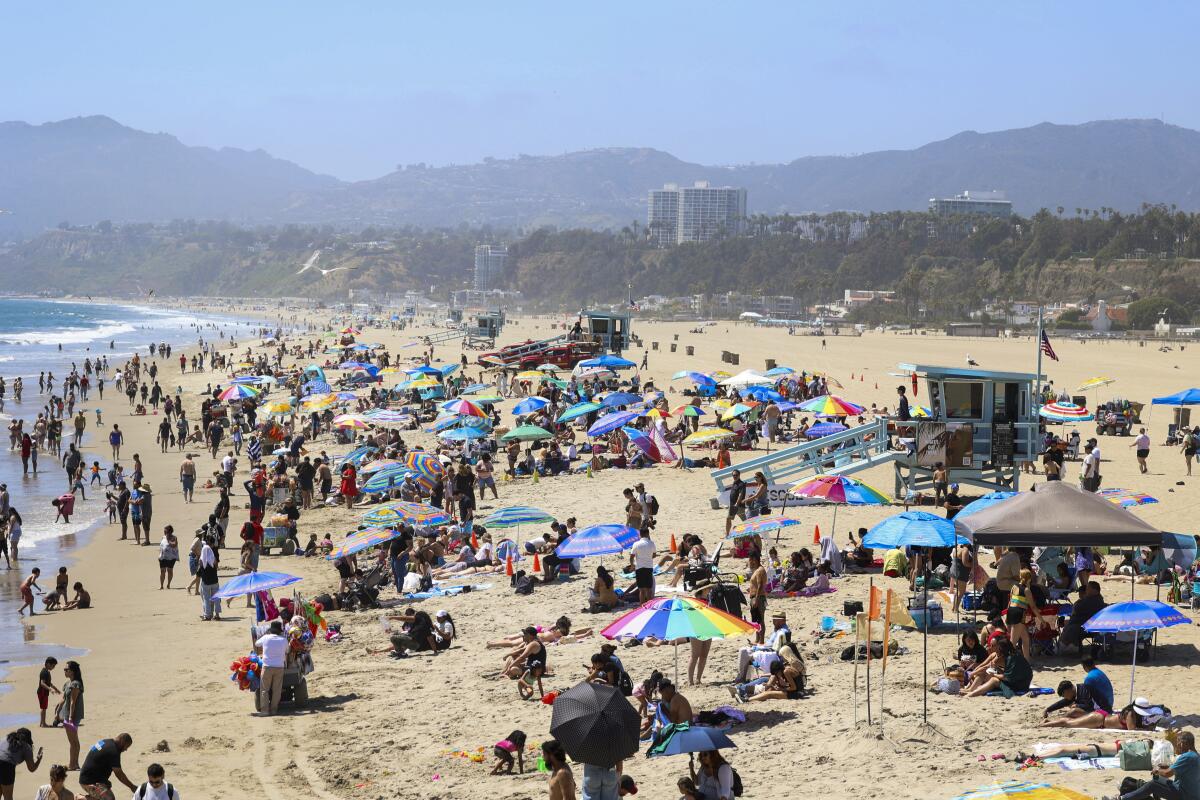
Melanoma of the skin is more rare and deadly, affecting an estimated 100,640 Americans this year and resulting in 8,290 deaths, according to the National Cancer Institute.
Protect your skin by using sunscreen, which can protect you from malignancies in two ways: chemical and mineral sunscreens. Chemical sunscreens contain ingredients that absorb UV rays while mineral sunscreens rely on zinc oxide or titanium dioxide to block or reflect the rays.
No matter what sunscreen you use, be sure to lather up before you head outdoors and don’t fall for these 10 sunscreen myths.
Here are just a few of the biggest sunscreen myths Karen highlights:
As long as you don’t get a sunburn, you’re safe
False! You don’t need to get a sunburn to put your skin at risk. UV exposure will compromise the DNA of unprotected skin — even if your skin looks normal to the naked eye — and the effects are cumulative, said Dr. Henry Lim, a photodermatologist at Henry Ford Health in Detroit who studies the effect of sunlight on skin.
“Each time the skin is damaged by the sun, with or without sunburn reaction, there is some damage that the skin would have to repair,” Lim told Karen. “If that subclinical damage goes on often enough for a long enough period of time, the skin’s ability to be able to completely repair all that DNA damage will be compromised.”
You don’t need sunscreen if you have dark skin
Absolutely you do! People of every complexion can get sun damage and skin cancer. In fact, “skin cancer in patients with darker skin tones is often diagnosed in later stages, when it’s more difficult to treat,” said Dr. Seemal Desai, president of the American Academy of Dermatology.
The chemicals in sunscreen can cause cancer
Wrong! The active ingredients in sunscreens sold in the U.S. are regulated by the Food and Drug Administration, which has determined that they are safe and effective. The National Academies of Sciences, Engineering, and Medicine add that “sunscreen use is not linked to higher rates of any type of cancer.”
You can keep sun damage at bay by wearing a good hat
Not exactly! A wide-brimmed hat can help protect you from the sun, particularly for people who are bald or have thinning hair.
However, Karen reports that a hat will only block UV rays coming from above. Without sunscreen, you’ll still be vulnerable to rays that reflect off the water, sand or urban surfaces like a sidewalk, which can reach your skin from below. (This is also why you need sunscreen even if you’re in the shade.)
Here’s more on sunscreen myths you can’t afford to fall for.
The week’s biggest stories

Presidential debate
- Biden’s verbal stumbles, Trump’s ‘morals of an alley cat’: 6 debate takeaways.
- Biden’s debate gamble went spectacularly wrong. Now Democrats are in panic mode.
- Biden’s debate performance pushes Democrats to consider the once-unthinkable: Casting him aside.
- Column: How’d the grandpa debaters do? Three experts on aging size up Biden, Trump.
- Newsom praises Biden, shoots down post-debate questions about replacing him.
California insurance crisis
- State Farm seeks major rate hikes for California homeowners and renters.
- California’s home insurance crisis: What went wrong, how it can be fixed and what owners can do.
- State Farm won’t renew 72,000 insurance policies in California, worsening the state’s insurance crisis.
Homelessness
- Supreme Court rules cities may enforce laws against homeless encampments.
- For the first time in five years, homeless count found fewer people living on L.A. streets.
More big stories
- A major heat wave is expected to broil much of California over Fourth of July week.
- Oakland mayor in crisis as lawyer and top aide jump ship following fiery speech after FBI raid.
- The Supreme Court wipes out anti-corruption law that bars officials from taking gifts for past favors.
- Protest violence outside L.A. synagogue spurs widespread condemnation. Bass vows quick action.
- NFL ordered to pay billions in damages for ‘overcharged’ Sunday Ticket.
- Hollywood’s exodus: Why film and TV workers are leaving Los Angeles.
- Summer COVID bump intensifies in L.A. and California, fueled by FLiRT variants.
- Princess Diana’s iconic gowns and letters sell for $1.5 million-plus at Beverly Hills auction.
Get unlimited access to the Los Angeles Times. Subscribe here.
Column One
Column One is The Times’ home for narrative and longform journalism. Here’s a great piece from this week:
Pressured by cops, a mom made a false murder confession. Now, her sons can prove she’s innocent. Nearly two decades after a woman falsely confessed to a shocking murder, her sons will see her exonerated from a wrongful conviction that derailed their lives.
More great reads
- ‘This is you now. It’s OK’: ‘The Swan’ contestants reflect on makeover competition 20 years later.
- The desperate hours: a pro baseball pitcher’s fentanyl overdose.
- Liza Colón-Zayas has put in the work. In ‘The Bear,’ she makes every second count.
How can we make this newsletter more useful? Send comments to [email protected].
For your weekend
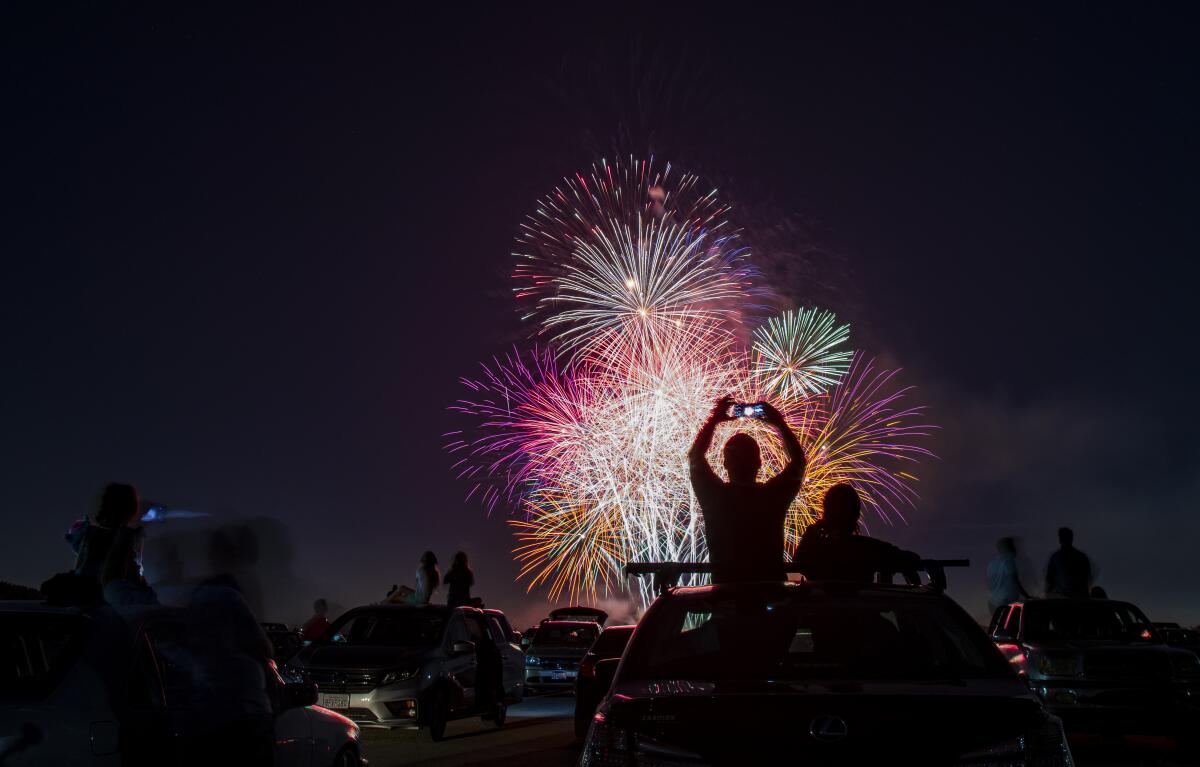
Going out
- 🎆 50 spots to watch thrilling Fourth of July fireworks and drone shows in L.A.
- 👦🏽 7 genius tips for avoiding preschooler meltdowns (and bankruptcy) at Disneyland.
Staying in
- 📺 More than the Simone Biles show: What to watch for at U.S. Olympic gymnastics trials.
- 🧑🍳 Here’s a recipe for lemon breadcrumb chicken.
- ✏️ Get our free daily crossword puzzle, sudoku, word search and arcade games.
How well did you follow the news this week? Take our quiz.
The residence of what California mayor was raided by the FBI?Plus nine other questions from our weekly news quiz.
Have a great weekend, from the Essential California team
Kevinisha Walker, multiplatform editor
Christian Orozco, assistant editor
Karim Doumar, head of newsletters
Check our top stories, topics and the latest articles on latimes.com.
